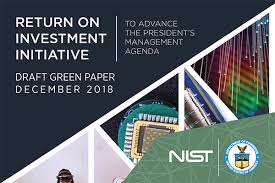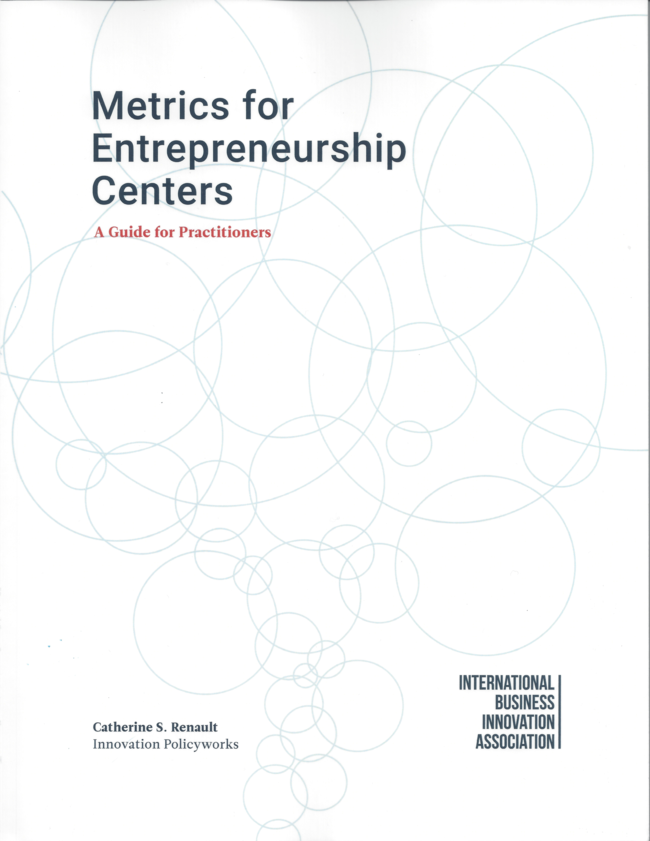|
|
|
Notes from Innovation Policyworks

A recent op-ed written by a local economic developer about the rural economy in Maine generated a lot of comments showing clearly the live wire he touched. Leaving aside the usual name-calling and insults that unfortunately inhabit most comment sections, several points of view emerged. One was the idea that if people don't find opportunity where they live, they should move elsewhere. Another was that we should revive the traditional ways of making a living (i.e., forest products, fishing, agriculture) and embrace them. A third was that reliable cell service and high-speed internet offer people a way to make a living where they are. Perhaps all of these things are valid to some extent.
What many of the writers, and indeed, the author of the piece all have in common is nostalgia for the "old days" when the rural economy was strong, when young people didn't leave to move to the "big city" and when you didn't need a college education to make enough money to raise a family. A great narrative to be sure, but there's a problem. Th0se "old days" never existed. Whether you go back a generation to the 1950s or to the start of the last century, rural communities have always been characterized by hard work and marginal living. Young people have always heard the lure of anywhere but where they grew up. And more education has always been correlated with higher incomes.
Like it or not, shift happens. Economies change. Places change. People (sometimes) change. For rural economies today, this means that new technologies are changing and potentially reviving traditional ways of making a living. Whether this is the advent of aquaculture or bio-based products made from wood pulp, or the use of sensors and drones in agriculture, nothing stays the same for long. The race is won when people, and their leaders, see the opportunities ahead and seize them.
Are you ready to learn more about innovation and entrepreneurship-focused economic development? Get started with this complementary pdf.
Cathy
|
Carbon Removal is Now "A Thing"
There's an emerging market trend (and therefore massive opportunity) around carbon removal.
Many believe that emissions reductions are not going to be enough and so removing carbon is a big part of the ongoing climate conversation. The National Academy of Sciences (NAS) has released a detailed R&D agenda for carbon removal and has provided a roadmap for sustained investment in these technologies. YCombinator, the California accelerator, just released a request for proposals with the intent of funding carbon removal technologies.... think about direct air removal, carbon mineralization and enhanced weathering! Project Drawdown is the blueprint with hundreds of concrete ideas to reverse global climate change. Changes that individuals can undertake range from the simple (recycle more) to more significant (eat a plant-based diet, use an electric car, have less kids!) Check out Project Drawdown
HERE, new technologies
HERE and NAS agenda
HERE.
|
|
|
Direct Air Carbon Capture
|
|
Gary Pisano's newest take on creating innovation cultures
The idea of cultures in companies and in places that support innovation is not new. In fact, many of the recommendations sound suspiciously like what used to be called "learning communities" twenty years ago. However, Harvard professor Gary Pisano's new article takes the usual generalities about innovation culture another step, and argues that for each positive attribute of an innovation culture, there is a countervailing requirement as well. For instance, he says, yes, you must have tolerance for failure, but no tolerance for incompetence. The other four recommendations are:
- Willingness to experiment but highly disciplined
- Psychologically safe but brutally candid
- Collaboration with individual accountability
- Flat but strong leadership.
Read Gary's article
HERE.
|

Unleashing Government Innovation
A new Department of Commerce Green Paper argues for increased public access to government inventions.
For decades, the innovation inherent in research and development performed at federal laboratories and agencies has been difficult to access, to say the least. Complicated intellectual property rights, bureaucratic systems and cultures focused on maintaining the status quo have all contributed to a poor record of technology transfer and collaboration. In December, the National Institute of Standards and Technology (NIST) in the Department of Commerce announced its "Return on Investment Initiative for Unleashing American Innovation," a "green paper" to maximize the transfer of federal investments in science and technology into "value for America." Five strategies were outlined in this paper:
1.
Identify regulatory impediments and administrative improvements in federal technology transfer policies and practices;
2.
Increase engagement with private sector technology development experts and investors;
3.
Build a more entrepreneurial R&D workforce;
4.
Support innovative tools and services for technology transfer; and
5.
Improve understanding of global science and technology trends and benchmarks.
At this point, this is a discussion paper, and NIST is accepting public comment until January 9, 2019. Read more
HERE. (Note, as of this writing, NIST is one of the agencies closed by the federal government shutdown, so the Green Paper itself is not available, and likely the January 9 date will be extended.)
|
Data: H-1B Visa Reductions a Drag on Economic Growth
Surprise, surprise. When you reduce the number of highly-skilled workers in a place, the economy suffers.
Since 2016, not only has it been increasingly difficult for immigrants to come to America, the number of H-1B visa has been reduced from 85,000 to 65,000. H-1B visas are normally issued to highly skilled workers from other countries. In order to obtain an H-1B visa for a potential worker, a company must demonstrate that they have tried to hire a citizen for the same job. Three recent research papers demonstrate the impact of this reduction in skilled workers. One study found that an increase in the number of H-1B workers was associated with an increase in productivity and innovation, regardless of the firm's R&D expenditures or revenues. In a related paper, researchers found that restrictions on H-1B visa led companies to offshore their R&D activities to where the desired workers resided. The countries that benefited the most were Canada, China and India. Lastly another study has found that the cap on H-1B visas have hindered the employment of the highest skilled foreign-born workers, and has NOT led firms to hire more citizens. See SSTI's summary of these papers
HERE.
|
|
2018's Most Intriguing Inventions
The MIT Technology Review just published its list of the 10 most intriguing inventions of 2018. Most, if not all, are still at the bench level....
- Artificial synapses, an electronic synapse that fires millions of times faster than the ones in your brain;
- Anti-aging medicines, mTOR inhibitors, that boost elderly people's immune systems;
- Electric planes without propellers, a high voltage electric field generates an ionic wind that pushes the plane forward;
- DNA computing for programmable pills, that would only release their pharmaceuticals when the right signals are present;
- Group brain-to-brain communications, what allow people to transmit thoughts directly to each other;
- Seeing through walls using Wi-Fi, detecting movement by tracking how signals are distorted;
- Secure quantum communications via satellite using unbreakable cryptography;
- Phones that shoot a million frames per second, extracting multiple frames from a single exposure;
- Edible electronics, disposable electronic circuits printed on soluble transfer paper; and
- Electricity-generating boots, with mercury in the heel that generates an electronic circuit when moved.
Read all these and see the links back to the original papers
HERE.
|
|
We often hear a general cry for decreased regulations, but rarely specific, actionable suggestions.
The New Mainers Resource Center just released a detailed blueprint for how to support Maine's economic development by meeting employer's demands for a skilled and culturally diverse workforce. There are 7.2 million college educated immigrants in the US, with more than half having degrees granted in another country. This is a vast, untapped resource of human capital, and it's a huge waste given the increased demand for skilled workers across the country. The New Mainer's report suggests that certification and licensure processes are unnecessarily preventing many skilled workers from contributing to their new communities. Recommendations specific to various regulatory agencies for nurses, teachers, accountants, engineers, lawyers and physicians are included. The findings for Maine serve as a roadmap for work that can be done in your community. See their report
HERE
.
|
|
|
"You'll never get bored when you try something new. There's really no limit to what you can do."
|
|
New to Innovation, Entrepreneurship or Economic Development?
Want to learn more about what programs work and why?
Want to understand your state/region/community and how to energize your economy with innovation?
Click
HERE for a complimentary PDF that outlines the whys and wherefores!
|
|
Baby Bonds Work
States supporting educational aspirations of their youngest citizens.
Facing a grey tsunami and subsequent reductions in the number of workers available, increasingly wide gaps in income levels and educational attainment among remaining workers, many states are considering existing or new programs to support the educational aspirations of young people.
Senator Cory Booker of NJ, for instance, has proposed a "baby bond" where every infant in America would get a trust account with $1,000 from the federal government. Every year, the US Treasury would contribute to the accounts based on the child's family income. The money could only be used to pay for a house, for higher education or professional training.
This is similar in approach to the decade old Alfond accounts in Maine, made possible by the Alfond Foundation. The data suggest that young people with money in a college account are three times more likely to go to college and four times more likely to graduate. Oklahoma's SEED program, started in 2007, also has seen considerable results. Washington University has studied the SEED program and found that the young children who participated in SEED scored higher on social-environmental development.
|
Many of us are working to create or support entrepreneurial ecosystems in our communities. A recent piece in Entrepreneur suggests that there are five type of people needed to sustain such an effort. Author Tim Schigel calls them the "Five P's of Human Capital."
Pillars: successful business icons with the experience and networks to get things done
Patrons: investors and early customers determined to help grow startups
Pioneers: leaders and founders of early stage companies
Professionals: the developers, designers, hustlers, experts, highly skilled employees of the startup companies
Partners: the attorneys, accountants, and public officials who support, services and networking capabilities help the pioneers.
I would add to this list the
Publicists, the writers, reporters, storytellers and evangelists that tell the stories that make the
Public into believers!
I've definitely seen this in practice, in places as diverse as Newton/Needham, MA; Indianapolis, IN and Durham, NC. Read Tim's piece
HERE.
|
|
Quick Links
Maine's Knowledge Economy: A Snapshot 2017
(2018 report coming later in January if federal shutdown ends in time! NSF statistics for 2018 not yet available!)
|
Metrics for Entrepreneurship Programs
 Have you been wondering how to convince your stakeholders that your program is performing well? My book on evaluating entrepreneurial programs, written for the International Business Innovation Association (iNBIA), is available on its website. The basics apply to any economic development program. Check it out HERE. Have you been wondering how to convince your stakeholders that your program is performing well? My book on evaluating entrepreneurial programs, written for the International Business Innovation Association (iNBIA), is available on its website. The basics apply to any economic development program. Check it out HERE.
|
|
|